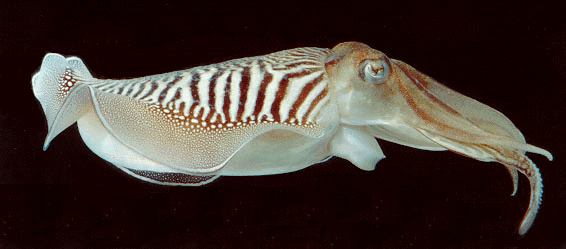One of three reductions occurred; the shell either:
- became more streamlined
- was reduced to a remnant inside their body, or
- was completely lost
 |
 |
 |
| Figure 14: A Belemnite. Their shell was compromised into an orthoconic form. | Figure 15: Octopus rubescens. Octopi no longer have a shell and they secrete a poison to evade off predators. | Figure 16: A cuttlefish. They still have a remnant of their shell inside their body. |


